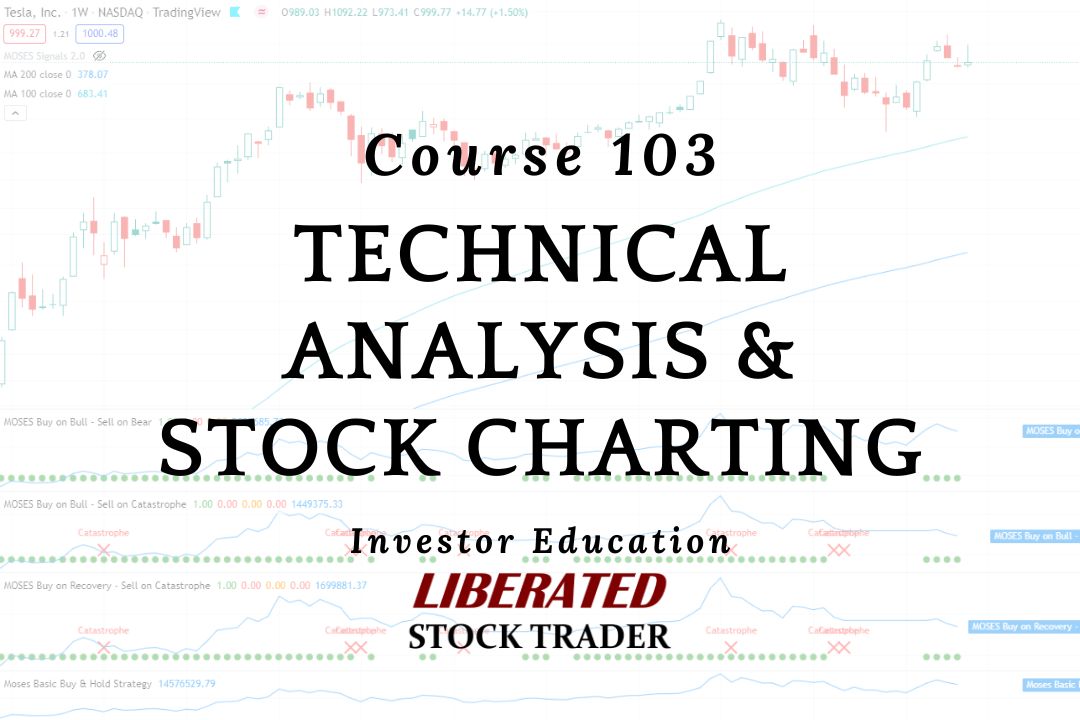Stock market trend analysis applies mathematics and charts to imply a historical trend and the potential future probability of the trend’s direction.
Do you know what direction the stock market is moving? Would you bet your money it will continue in the same direction? Welcome to the analysis of stock trend analysis.
A stock market is a volatile place. To make money in the stock market, you need to be able to predict where the market is going. This is not an easy task, but you can get a feel for where the market is heading with practice.

This lesson is superseded by this page:
One of the best ways to predict where the market is going is to look at trends. A trend is simply the direction that the market is moving in. You can start to understand where the market is heading by tracking trends.
Using charting software to track trends
There are a few different ways to track trends. One way is to use a stock charting program. These programs will allow you to see the trend lines for different stocks. This can be a great way to track trends, but it can also be time-consuming.
Another way to track trends is to use an automated stock market trend analysis tool like TradingView, TrendSpider, or Trade Ideas. TradingView will tell you if each stock is a buy or sell based on the trend. TrendSpider will automatically draw the trendline for you. Finally, Trade Ideas will recommend which stocks to buy and when.
What is an uptrend in stocks?
An uptrend in stocks is when the price of a stock increases over time. This can be due to several factors, such as positive earnings reports, increasing demand for the stock, or improving economic conditions. The stock or index is moving up, making new highs or higher highs.
What is a downtrend in stocks?
A downtrend in stocks is when the price of a stock decreases over time. This can be due to several factors, such as negative earnings reports, decreasing demand for the stock, or deteriorating economic conditions. The stock or index is moving downwards, making lower lows.
What does consolidation mean in stocks?
A stock consolidation is when the price of a stock trades in a relatively narrow range for an extended period. This can be due to several factors, such as uncertainty among traders, lack of buying or selling interest, or economic conditions.
Three types of stock trend duration
- Short Term: Days to weeks
- Medium Term: Weeks to months
- Long Term: Months to years
What is a short-term trend in stocks?
A short-term trend in stocks is typically defined as a move that lasts less than a few weeks or months. This can be due to recent news events, investor sentiment, tax-loss harvesting, or end-of-month options execution.
What is a medium-term trend in stocks?
A medium-term stock trend is typically defined as a move that lasts from several weeks to several months. This can be due to factors such as earnings reports, economic conditions, and global events.
What is a long-term trend in stocks?
A long-term stock trend is typically defined as a move that lasts from several months to several years. This can be due to several factors, such as earnings reports, economic conditions, and global events.
Using stock trend direction & timeframes together
You could be specific about the market trend by combining the above terms. For example, you could say the market is in a short-term up-trend but a long-term down-trend. But isn’t that contradictory, the market being both an uptrend and a downtrend simultaneously?
Not really; it makes perfect sense.
Using moving averages to assess the market trend
There are a few different ways to track trends. The most common type of trend is a moving average. A moving average is simply the average price of a stock over time.
You can use moving averages to track long-term trends or short-term trends. Long-term trends are important because they can give you an idea of where the market is heading in the future.
We can use moving averages to help us easily assess whether the market is up or down and in what time frame. To do this, we need to set up three moving averages on a chart.
Setting up your stock chart
Set the Price to Logarithmic and one day per bar.
- Add Moving Average 200 – White Dashed Line – this is the moving average of 200 days of price history.
- Add Moving Average 100 – Orange Line – this is the moving average of 100 days of price history.
- Add Moving Average 20 – Green Line – this is the moving average 20 days of price history.
If the price is above the 200-day moving average, we can assume it is in a long-term uptrend. Below the 200-day moving average, the price is in a long-term downtrend. 200 days = 10 months = months to years’ time frame.
If the price is above the 100-day moving average, we can assume it is in a medium-term uptrend because it is above the moving average. 100 days = 5 months = weeks to months time frame.
The same goes for the 20-day moving average; this represents 20 days = days to weeks’ time frame.
So now you know how to evaluate a market trend using moving averages. You can also use this technique for stocks, commodities, or even currency charts.
Stock Market Trends Conclusion
So the questions to ask yourself are:
- Do I want to buy into the stock market if it is in a short-term down-trend?
- Do I want to buy into the market if it is in a medium-term and long-term up-trend?
Also, do not forget short term trends develop into medium-term trends, which can develop into long-term trends.



